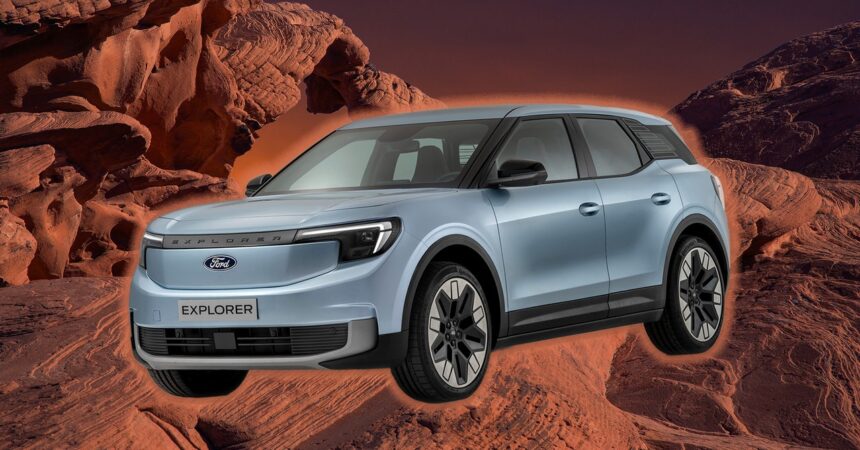Ford’s Electrification Challenges: A Closer Look at the Explorer and Capri
As the automotive world continues to pivot towards electrification, major players like Ford are facing unique challenges and opportunities. Recent discussions surrounding the Ford Explorer and Capri EVs highlight the complexities involved in tapping into the electric vehicle (EV) market, especially when conventional strategies may not suit evolving consumer demands.
Understanding the Background
In a recent interview, Amko Leenart, director of design for Ford Europe, addressed the use of components sourced from Volkswagen (VW) in the design of the Explorer and Capri models. The revelation that Ford has implemented VW’s controls—often criticized for their usability—has drawn attention. Leenart’s comments point to the realities of automotive partnerships; while improvements were acknowledged, the limitations posed by supplier arrangements are evident. This dynamic illustrates a broader issue within the automotive industry: the balance between cost, partnership benefits, and consumer expectations.
The Good, the Bad, and the Missed Opportunities
Despite Ford’s innovations and the competitive advantages of models like the Explorer—which boasts impressive range, a smooth ride, and an attractive design—issues like control interface usability can tarnish the overall consumer experience. Expert reviewers have pointed out that even outstanding EVs can be undermined by poor user interfaces. The Explorer’s pricing strategy, with the top-tier model approaching £54,000 (around $68,500), adds to the pressure on Ford to deliver not just performance but also an outstanding consumer experience to justify its premium price.
Moreover, Ford’s response to market delays and timing issues seems to have compounded its challenges. As competitors launch compelling alternatives, Ford’s Explorer and Capri face difficulties in carving a niche for themselves in an increasingly crowded marketplace. The urgency is palpable, especially with the UK’s ambitious Zero Emission Vehicle mandate, which requires that by 2025, at least 25% of new car sales from manufacturers must be emissions-free. Ford, like many automakers, faces pressure to rapidly expand its EV offerings to comply with regulatory frameworks and stay competitive.
Looking Ahead: The Path to Greater EV Integration
As Ford navigates these challenges, there’s a critical opportunity for the company to reassess its approach to electrification. Recent successes with models like the F-150 Lightning and Mach-E indicate that Ford’s innovative capabilities can lead to strong consumer interest when the company invests in its own technology rather than relying heavily on partnerships.
Industry experts and enthusiasts are optimistic about Ford’s future moves, particularly with upcoming full-EV offerings beyond hybrid models. With the prospective innovation in 2025, the hope is to witness more Ford-developed vehicles that are not only capable but also affordable for a broader audience.
Conclusion: A Question of Strategy
The automotive landscape is rapidly evolving, and as Ford positions itself amidst these shifts, choices surrounding partnerships, pricing, and product design will be crucial. By focusing on consumer demands, simplifying control interfaces, and aiming for a distinct identity in the electrified market, Ford can not only meet the requirements set by regulations but also create a legacy of quality and innovation in the EV space.
The coming years will be indicative of Ford’s adaptability and its ability to leverage its storied history into a future that aligns with environmental goals and consumer aspirations. If done right, Ford can not only thrive in the EV realm but also lead the charge as one of the foremost champions of sustainable mobility.










